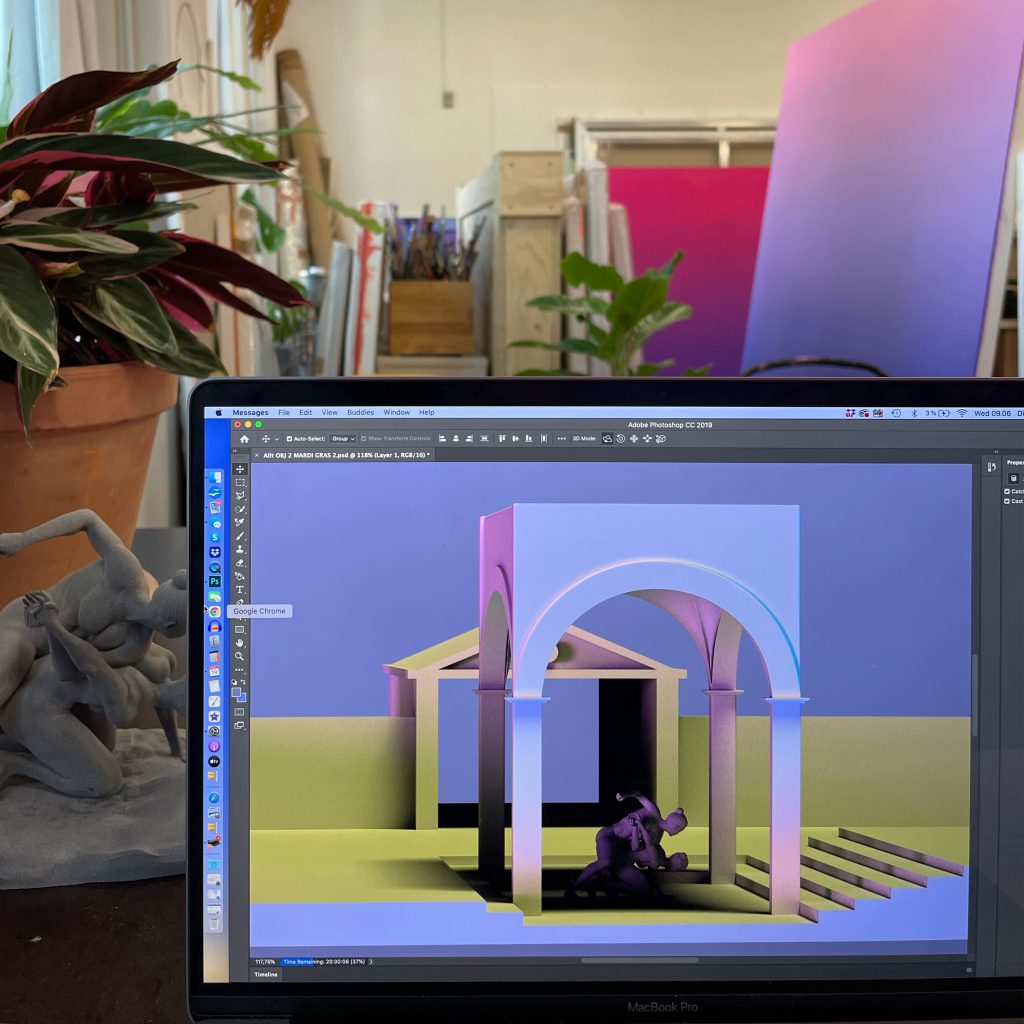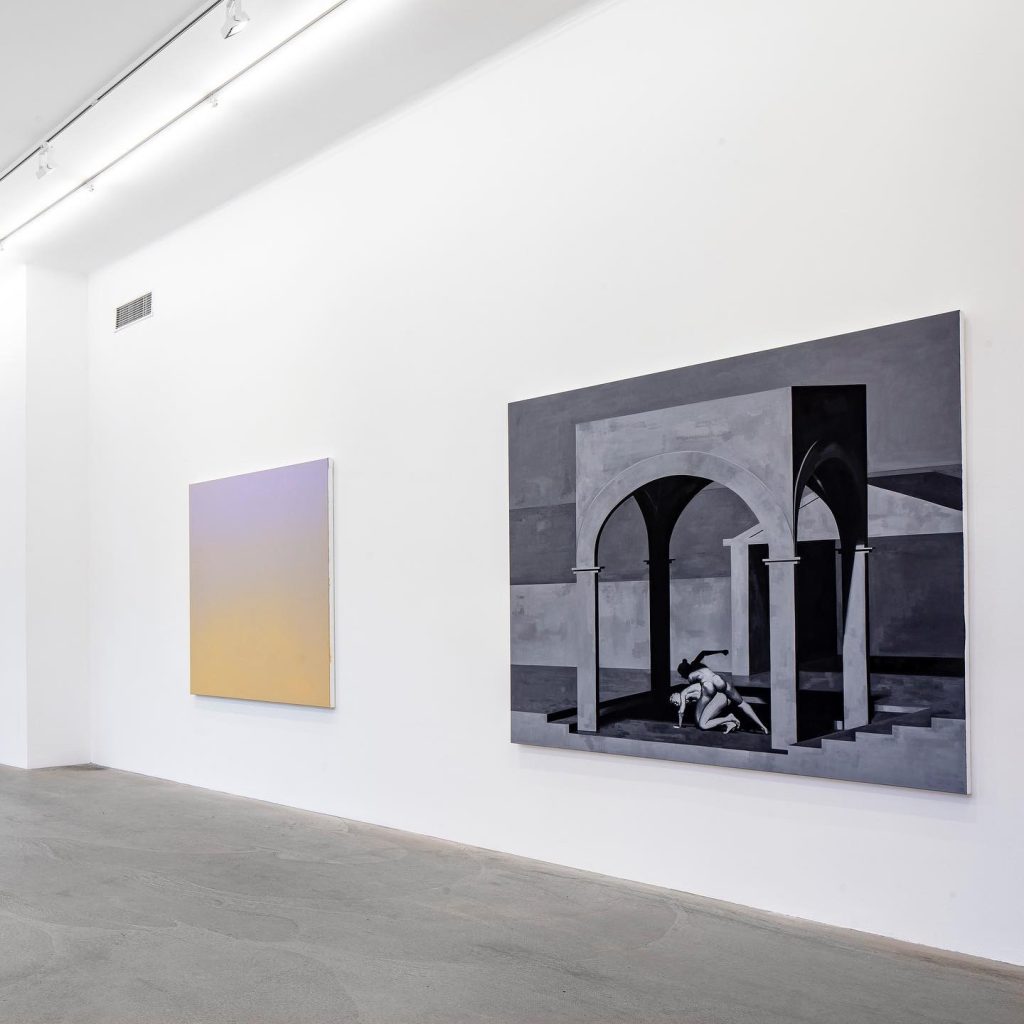Virtual
Sculptures
2021
Ditte Ejlerskov




The Wrestlers is a virtual sculpture created by the artist Ditte Ejlerskov, now acquired by Museet for Samtidskunst (Museum of Contemporary Art) for its permanent collection. The sculpture reimagines the Uffizi Wrestlers, a marble sculpture of two men wrestling from the first century AD that epitomizes the idealized male body in antiquity. In Ejlerskov’s virtual sculpture, the Uffizi Wrestlers is reconfigured as two interlocked, muscular female bodies. To the artist, the sculpture is a representation of competing forces within the human body—specifically the hormones oxytocin and adrenaline—connected to her personal experiences of giving birth.
Ditte Ejlerskov’s The Wrestlers is part of a millennia-long Eurocentric tradition of copying, and sometimes slightly modifying, this sculptural representation of the two struggling bodies. The Ufizzi Wrestlers is itself a marble copy of the now-lost Greek original in bronze. Other replicas in bronze and plaster exist in numerous copies across the globe. Despite being one of Western art history’s most well-known works, its origin and the original artist remain unknown.
The work is envisioned as a new kind of public sculpture: it exists both as a unique work in the museum’s permanent collection and as an art work in the public domain, available to everyone as a free download. Ejlerskov has waived her rights to the work, allowing everyone to use and transform it, free of charge and with no strings attached. This means that anyone can download, print, animate and reshape the sculpture as they wish.
The Museum of Contemporary Art has acquired the virtual sculpture as a so-called NFT, Non-Fungible Token. NFT technology is a way of proving ownership of a digital object, and Ejlerskov is among the first visual artists in Denmark to explore this field. NFT technology is based on the same technology as cryptocurrencies such as Bitcoin and Etherium: so-called blockchains, which in recent decades have created a revolution in the financial world by establishing electronic currencies that are not regulated in the same way as the traditional ones. For Ejlerskov, the new technology signals an era in which the old financial system will be replaced by a new, fairer and more transparent global system.
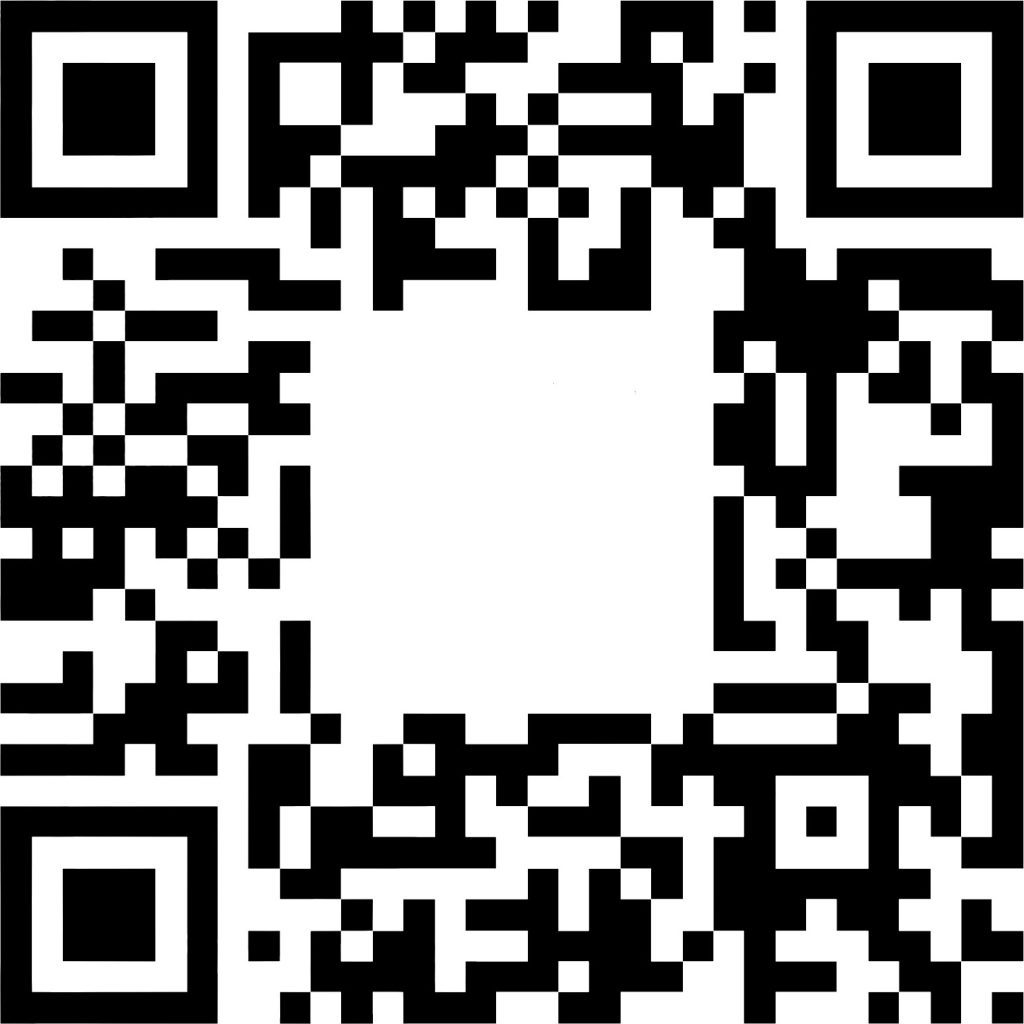
The Museum of Contemporary Art offers learning materials as well as workshops on The Wrestlers for primary and secondary schools, which will evolve along with the project. The workshop can be formatted to meet individual needs, and will include reflections and exercises on materiality in the virtual universes, creations of physical sculptures and the art-historical perspectives of The Wrestlers.
Painting has been Ditte Ejlerskov’s main medium since she graduated from the Malmö Art Academy in 2009 and The Wrestlers was originally created as a model for a planned series of paintings Ejlerskov. The idea was to create a digital sculpture that could visualise an inner struggle like the one Ejlerskov had experienced at the birth of her first child and subsequently wished to process and change in preparation for the birth of her second child.
Ejlerskov’s original plan was to generate screen views of from all angles. As the work progressed, it became clear that the ‘sci-fi-like’ feel of the computer images could not be successfully translated into paintings. As a result, the artist opted instead to focus entirely on a digital approach to the sculpture and the screenshots it could produce. The result is a substantial series of works that remains a work in progress. The series currently consists of large, two-dimensional computer prints and a series of woven carpets and videos.
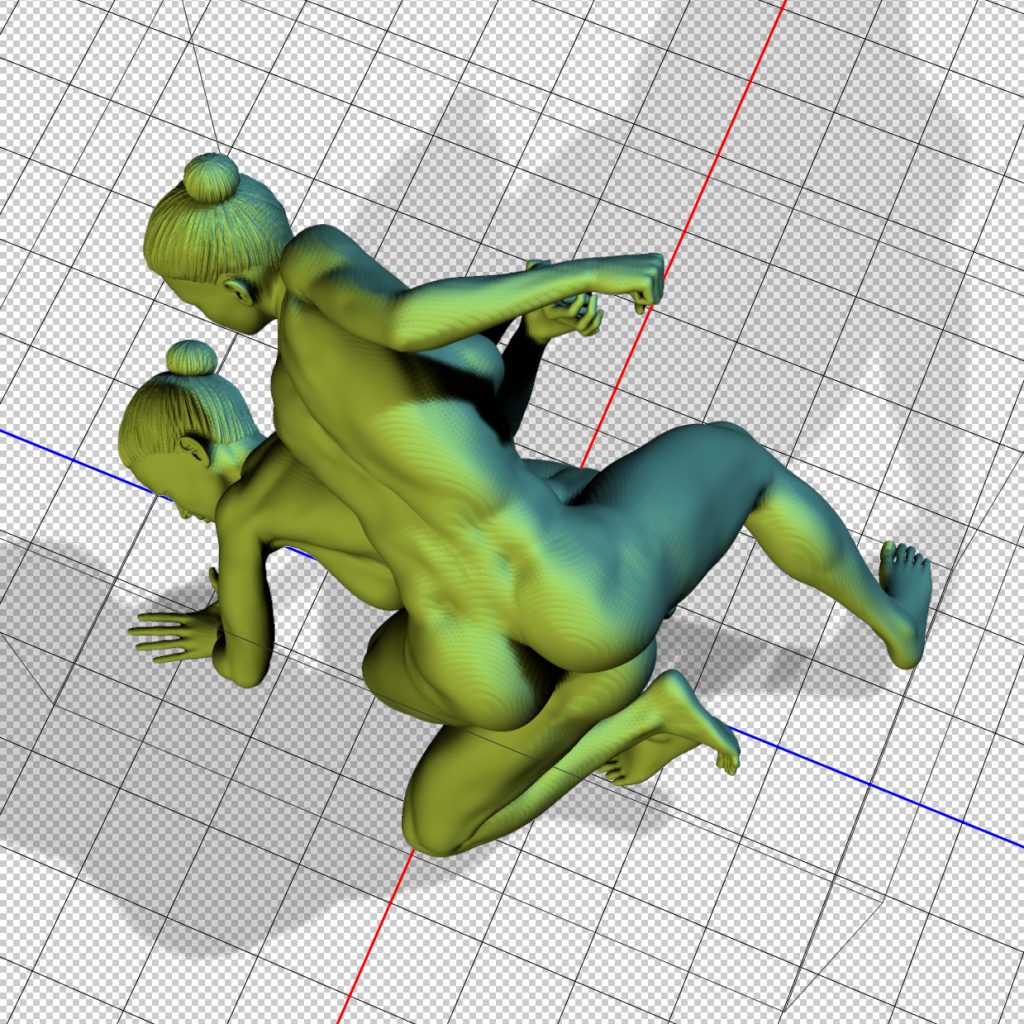
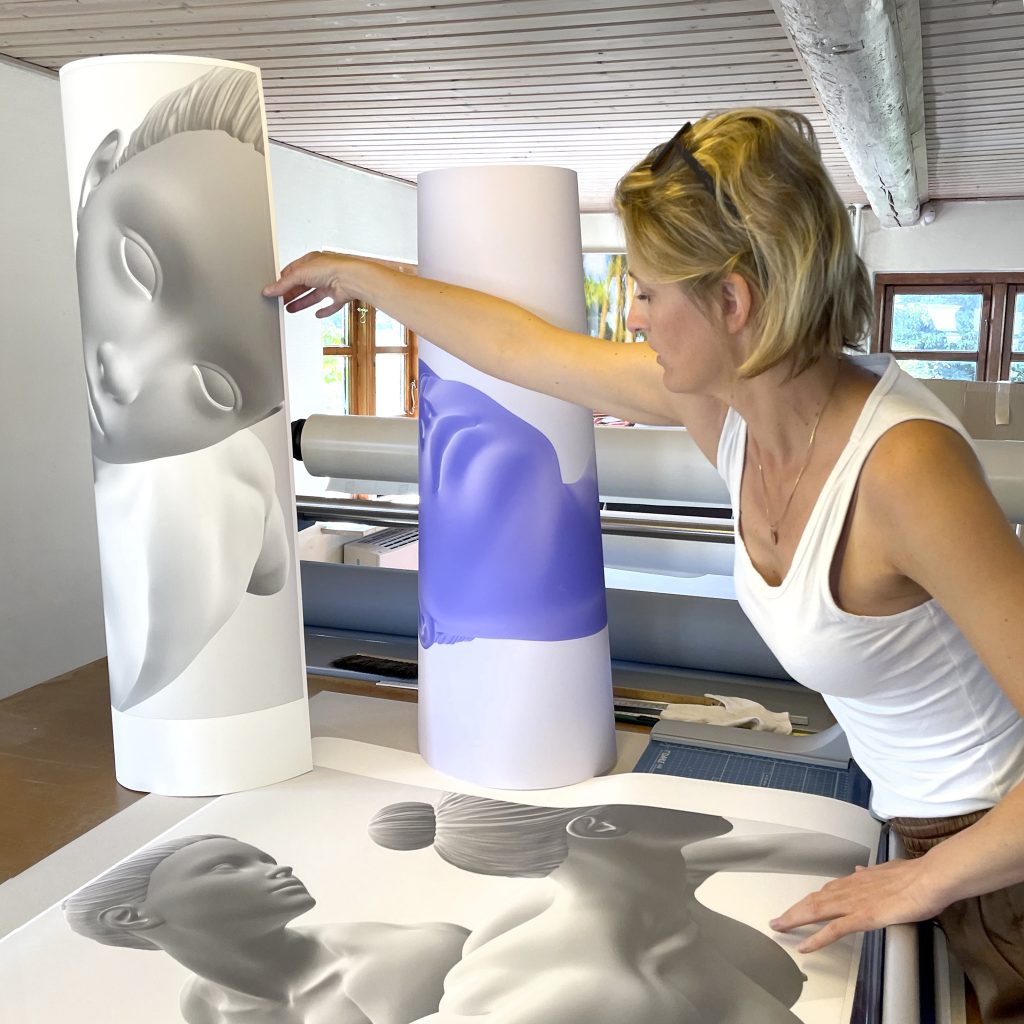
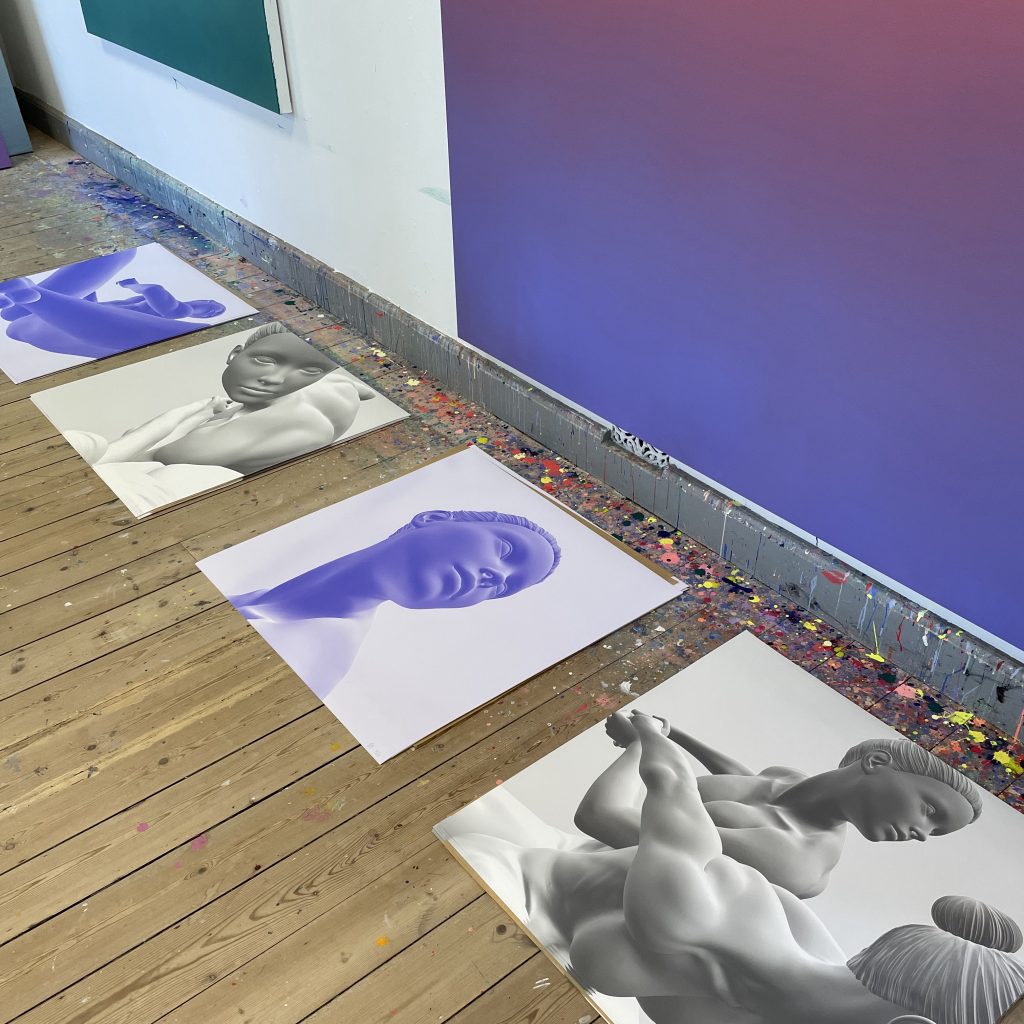
‘For me, the 3D model was initially more of a tool assisting the creation of works – rather than a work of art in its own right. It’s still a bit of both. In early 2021, I discovered how NFT technology allowed me to create my works not as paintings, but purely as digital images. Being digital and ‘minted on the blockchain’, as it is called, the images of the two wrestlers retained their sci-fi-like feel and the mysterious light that seems to emanate from within. At the same time, I started researching 3D software and discovered all the limitations embedded in me and in my computer and how those limitations also paved the way for a lot of very beautiful rendering errors and glitches.’
‘Together with the Museum of Contemporary Art, we developed the idea of a globally accessible public sculpture. I think it’s a really lovely thought that my personal meditation instrument is now available to everyone. It can be right there on your kitchen table next to your morning cup of coffee or on your bedside table or in your garden. Perhaps the sculpture can make you think about what forces are driving you, or even tormenting you.’
Ditte Ejlerskov’s The Wrestlers is an updated version of the world-famous classic sculpture of the same name, also known as The Pancrastinae. Housed in the Uffizi in Florence, the oldest preserved version is a Roman marble copy from the first century CE of a Greek original – probably in bronze – which no longer exists. In contrast to the Western tradition since the Renaissance, Greek sculptures were rarely created by a single artist, meaning that no clear answer can be given to the question of who originally created the wrestlers.
Through the ages, the sculpture has been copied, depicted and modified in countless versions that can now be found scattered across large parts of the globe. When the marble sculpture was discovered during an excavation in 1583, its heads were missing, so the heads appearing on the sculpture today are later additions. In Denmark, you will find a bronze copy in the Ørsted Park in Copenhagen and a cast in plaster at the Royal Cast Collection.
Ejlerskov’s female version of The Wrestlers builds on the sculpture’s millennia-long history of copying and modification. Through the Creative Commons license, Ejlerskov’s The Wrestlers seeks to further layer the history of copying and reinterpreting classical sculptures. By placing the virtual sculpture in the shared digital public space, the artist complicates concepts such as authorship and ownership, original and copy.
To the artist, the two wrestling bodies symbolise an inner struggle. When Ditte Ejlerskov was pregnant with her second child, she began working on a female version of the classic wrestling match as a way of processing two conflicting emotions: anxiety and love. Ejlerskov’s first birth had been dramatic and dominated by fear; an overproduction of the hormone adrenaline will typically prevent the body from releasing oxytocin, also known as the love hormone, necessary during childbirth and breastfeeding. Seeking to take control of her own body in order to make her next birth calm and loving, Ejlerskov created the sculpture of the two wrestling women as a meditation object capable of accommodating conflicting physical states.
‘For me, the two bodies became avatars of oxytocin and adrenaline. I would view them from all angles in the hope of manifesting a calm home birth far away from hospitals and medical procedures. I live and work in the same building, so I was able to work right up until the moment I had to give birth. For me, art is not just work, it’s a way of surviving. I take all important personal issues with me and bring them to bear in my work.’
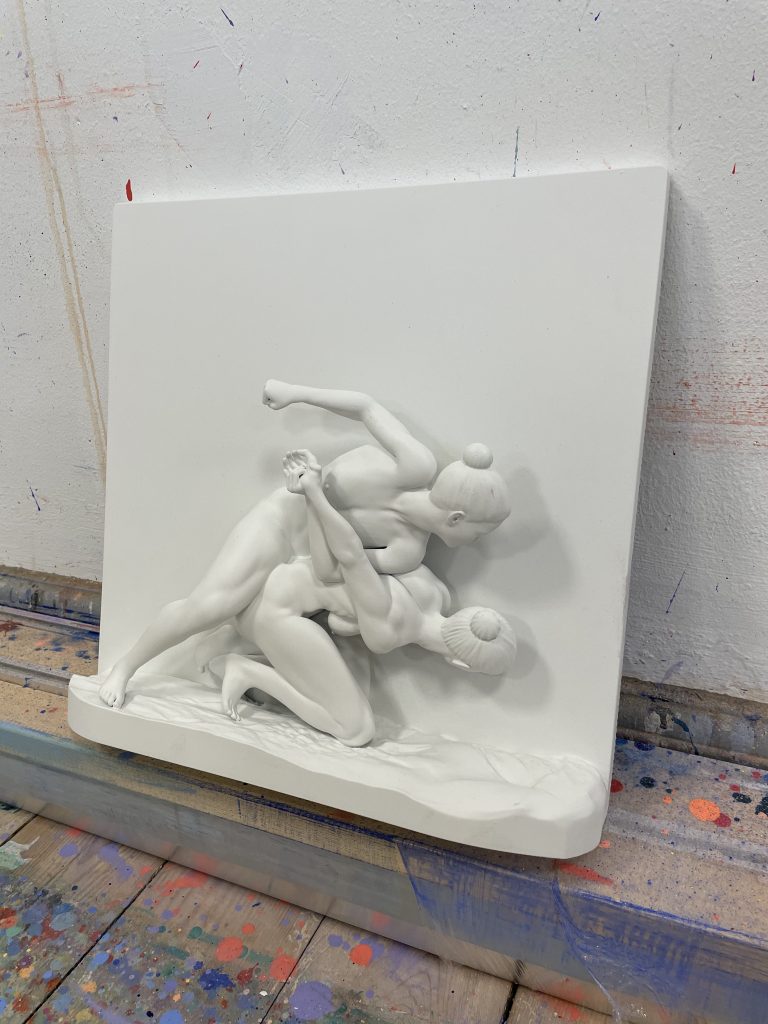
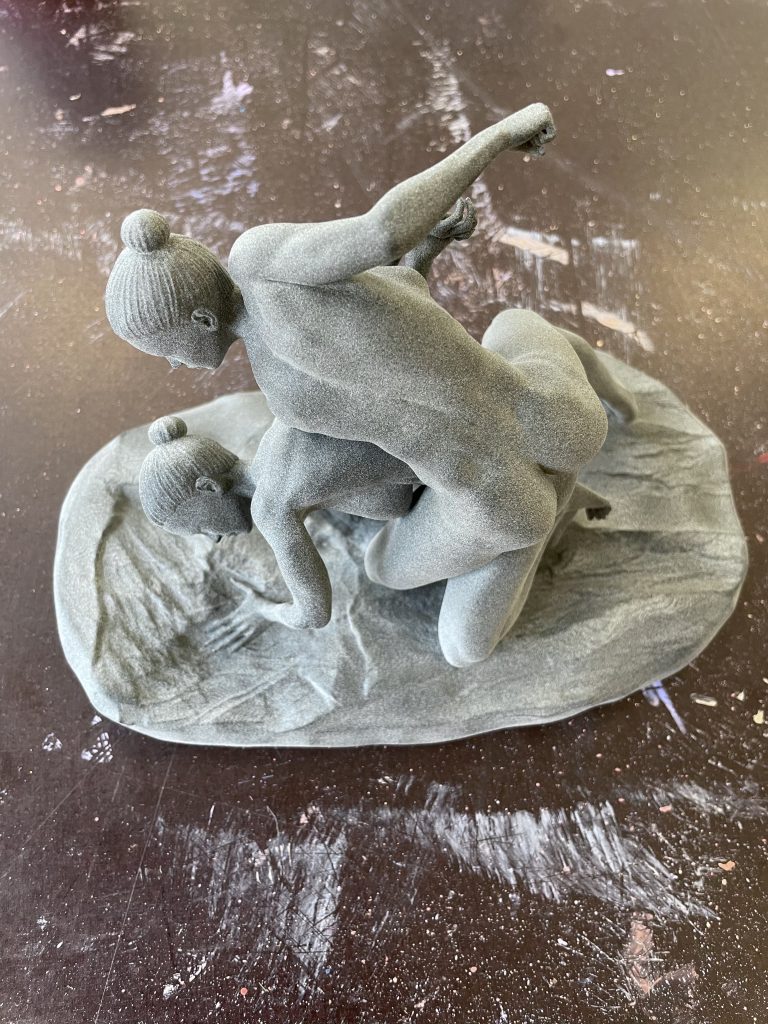
In early 2021, Ejlerskov began to explore the opportunities for presenting the images of the wrestling bodies as so-called crypto-art. Crypto-art is a term used to describe a way of selling and buying digital objects – electronic files such as a digital image, a gif or a movie – in a way that unambiguously proves ownership. Even if the file is copied and exists in infinite copies, the blockchain technology of crypto-art can still determine who the rightful owner is.
When Ejlerskov decided that the sculpture should not be translated into paintings, but best came into its own as digital images created as crypto-art, in her mind it also came to symbolise a struggle between an old world and a new one. A struggle that she sees mirrored in the transition from traditional centralised banking and finance systems to the decentralised virtual economy of cryptocurrencies.
‘It seems we are currently seeing a paradigm shift. We have one foot in a new era but there are plenty of battles to be fought before we can truly move on. That’s what crypto has become a symbol of for me – an entirely new system.’
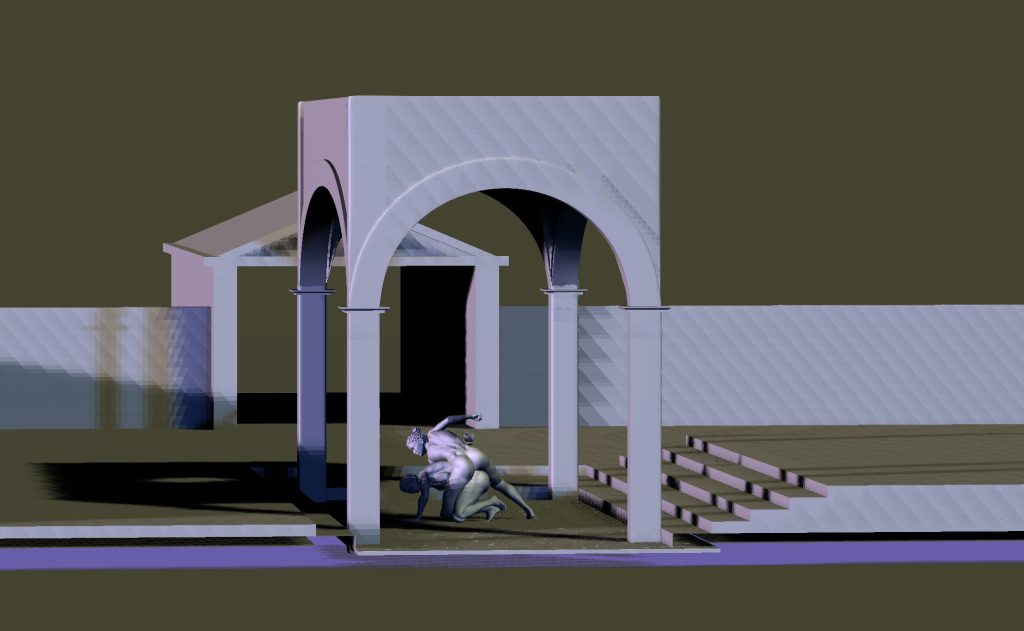
The Wrestlers marks the launch of Virtual Sculptures, a new initiative that interweaves art production, research, and learning. Each year, The Museum of Contemporary Art will commission an artist to create a new work that primarily lives online or in the virtual sphere, but might have physical and material manifestations. The museum will acquire the work and build an educational program around it for kids and youth. The commission series seeks to pose questions about the inherent possibilities – for example to question and expand identity, bodies, architecture and politics – as well as the limitations of the virtual:
How is our online presence part of the public space?
Is the experience of a three dimensional virtual object as real as a physical one – and how can it be shared by all?
What happens to a work of art’s status as a unique, singular object if it exists in endless copies and mutations?
The Virtual Sculptures exhibition concept marks the beginning of the museum’s new strategy as an itinerant museum. No longer housed in a permanent museum building, the museum will present art programs and collection works on a project-basis, in partnerships with other organisations in diverse locations. The institution seeks to remain open and responsive to both art practices and audiences, learning and adapting in the process.
